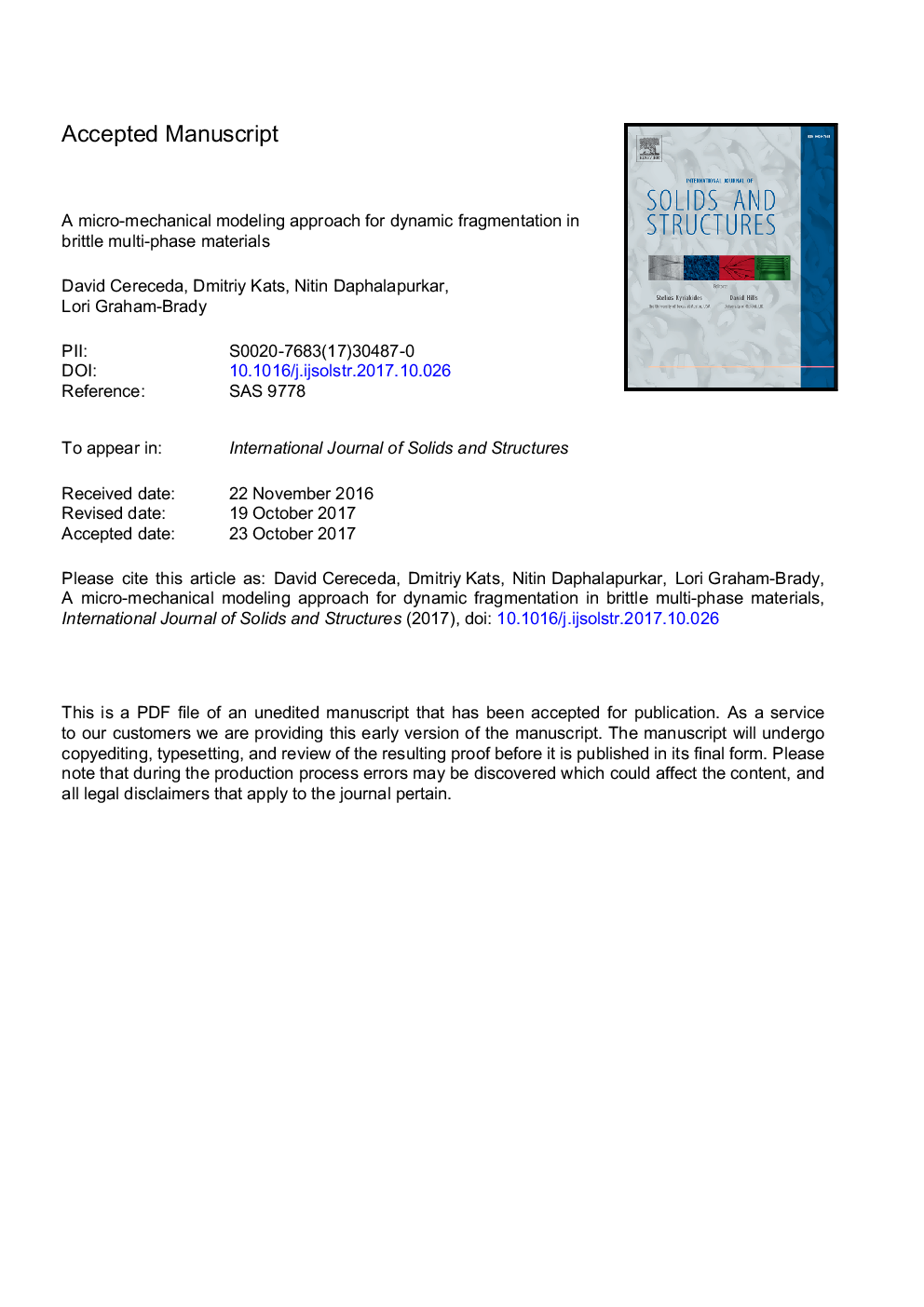| Article ID | Journal | Published Year | Pages | File Type |
|---|---|---|---|---|
| 6748423 | International Journal of Solids and Structures | 2018 | 34 Pages |
Abstract
Understanding the response of structures exposed to high rate mechanical loading is important for improved protection and security. Modeling the behavior of these structural materials and components can be performed at different scales. However, a detailed picture of the behavior of the material under high strain rates can only be gained by treating each of its components independently. In this work, we present a one-dimensional finite element model to study dynamic fragmentation in multi-phase materials, and we applied it to study masonry as an example of multi-phase material for structural applications. The model follows a micro-mechanical approach where the matrix (brick), inclusions (mortar), and interfaces between matrix and inclusions are represented separately. Within each constituent, the heterogeneity in the material is introduced through a critical strength distribution. A cohesive zone model has also been incorporated to model progressive damage. Results show the influence of the volume fraction and the inclusion size on the average fragment-size and fragment-size distributions for strain rates between 102 and 105Â sâ1. Based on these results, a mathematical expression that captures the dependence of the average fragment-size on the strain rate, volume fraction and inclusion size has also been formulated. The observed increase on the average fragment-size with decreasing the inclusion size suggests the existence of a critical length that depends on the strain rate and material properties below which, no additional fragments of the inclusion-material are created.
Related Topics
Physical Sciences and Engineering
Engineering
Civil and Structural Engineering
Authors
David Cereceda, Dmitriy Kats, Nitin Daphalapurkar, Lori Graham-Brady,
